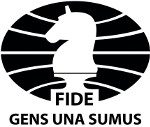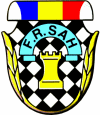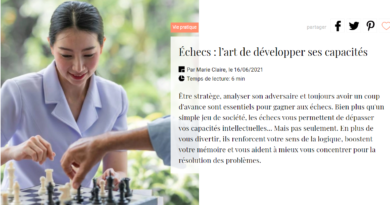Teaching for Transfer (Part 1)
by Renate Otterbach

One of the challenges chess teachers face is students’ ability to apply classroom instruction to actual game performance. In chess, this problem may be greater than in other subject areas; some potential reasons are:
- Chess is a complex cognitive game.
- Chess, like reading, mathematics, research, etc., is a process-based game — and process-based skills take longer to develop but can be used across domains.
- The gap between what is learned in class and what is required to play the game well is vast.
In this blog, I want to focus on the second and third aspects. The gap between having domain-specific knowledge in chess and being able to play a high-quality game in chess is enormous. Although many people study and play chess throughout life, most of them get stuck at one level, unable to improve despite spending extensive time practicing. Someone once quipped: You have to study a lot even to be a bad chess player.
So, what does it take to be good at chess? From a cognitive perspective, the systematic integration of large amounts of information into a holistic logic system allows you to adapt effectively to new situations on the chess board. From a practical viewpoint, this means you need to have a large chess knowledge base, highly developed analytical skills, and the ability to adapt your synthesized knowledge to the problem on the board for every move.
The gap between what is taught in class to use in a game is huge; it requires the highest level of transfer. For the beginning player, even “easier” levels of transfer, from one tactics problem to the next, can be challenging. I discovered that when I tried to work through László Polgar’s book Chess: 5334 Problems, Combinations and Games.[1]
After I had completed the one-move checkmate section and started the two-move checkmate section, I was lost. I did not have enough information to understand the problem, even after I checked the answer.
Based on my analysis at that time, I did not have enough chess knowledge of tactical patterns to understand the position; neither did I have the necessary visuospatial ability to see the complete picture after seeing the solution. I could not make any progress because I lacked the necessary critical components: chess knowledge and visuospatial reasoning skills.
Looking deeper into the scenario, we can identify two key components facilitating transfer: domain-specific abilities and cognitive skills. It also provides us with additional insights. The gap between the student’s current understanding and the expected new understanding must be small enough to cross. No transfer will occur if the gap is wider than the students can manage with their current resources.
Using an analogy, let’s say you have a family with children of different ages going for a walk, and they must cross water puddles of different sizes. Each family member is limited by their stride in crossing the puddle without getting wet. The parents can cross a much larger puddle than their two-year-old daughter. So, what do they do? They pick up the child and carry it across the puddle. If the body of water is a small creek instead of a puddle, even the longest stride will be insufficient; spaced steppingstones are needed. The larger the body of water is, the more complex resources are needed to cross it. If the body of water is a river, a bridge (or boat) is needed.
The same is valid for transfer; the further the expected point of application, the more support is needed to enable students to be able to transfer what they learned to new situations. As in the example above, there are two distinct differences, individual differences (stride length) and what could be called absolute differences (inability for transfer to occur without outside resources). As teachers, we must be able to adjust our teaching to address both types of problems. If we do not address individual differences, students will be left behind, bored with chess over time, and drop out.
If we expect our students to apply what they learn in class to become better chess players, we must find ways to build effective bridges of knowledge that everyone can cross. This greater challenge requires systematically integrating our understanding of chess, cognitive processing, learning, and teaching. Although we have many building blocks for this “bridge,” more are needed. In addition, we need to know how to effectively connect and integrate these various knowledge bases before we can build a solid bridge. To build this bridge, we need further research in curriculum design and pedagogy.
In the next blog, we will discuss how teachers can systematically identify obstacles that interfere with student’s ability to transfer information.
This post is the fifth part of Renate’s Develop learning to learn strategies through chess series.
[1] Polgar. L. (1946) Chess: 5334 Problems, Combinations and Games. New York: Black Dog & Leventhal Publishers.


